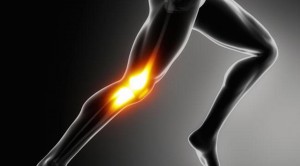peaPatellofemoral Pain Syndrome in Distance Runners
 By Dale Hamilton, SPT
By Dale Hamilton, SPT
University of North Carolina at Chapel Hill
Background
The idea of this project was born from a personal experience. I have always been a recreational runner – participating in several races over the years. In 2012, I injured my right knee while kickboxing. Since then, I have had knee pain whenever I run longer distances. This was my first time having knee pain and the first time I learned about patellofemoral pain syndrome (PFPS). After two years of having knee pain when I run, I decided to visit a physical therapist where I learned more about the condition and the reason behind my knee pain.
I learned that I demonstrated decreased hip extension bilaterally during the propulsion phase of the running cycle, bilateral quad dominance during a squat, as well as decreased gluteal activation during hip extension. This piqued my curiosity and fueled my decision to explore the topic further, hence the reason it is the focus of my capstone.
Purpose
The intent of my capstone is to research the known etiologies of patellofemoral pain as well as possible interventions for some of the modifiable risk factors for the condition.
Project Development & Products
In the fall of 2014 during my Evidence-Based Practice II course (EBP II), I started to explore the topic of PFPS where I developed a clinical question around finding evidence-based physical therapy interventions for the condition. For my Critically Appraised Topic (CAT), I explored the efficacy of foot orthotics vs. hip strengthening exercises in the management of PFPS. A copy of my final CAT can be seen here.
During the literature search for my CAT, most of the studies I found were conducted with female subjects and is therefore not applicable to the entire population of runners. Being a male runner, I wanted to locate evidence-based interventions that applied to both sexes. Consequently, during the spring semester, I developed a search strategy that focused my literature search on finding interventions that were suitable for both males and females.
From my refined literature search, I found several articles that discussed PFPS in both male and female athletes and highlighted interventions that were successful in both. A synthesis of the articles I reviewed can be seen in my evidence table here. I used this information to produce a PowerPoint presentation that I could deliver to a group of clinicians regarding evaluation and treatment of PFPS.
In addition, I integrated this material into a screening tool as well as a flowsheet that could assist a clinician in performing a thorough evaluation of an individual.
Evaluation
The attached survey was developed to gather feedback about the presentation’s strengths, weaknesses, and overall effectiveness
Reflection
This is a revision to my original capstone. My initial topic was too narrow because I chose to focus on research and interventions for male runners only. This was not a good idea since I am researching a condition that mostly affects females. As a result, I expanded my search and included more studies. This allowed me to capture the different etiological factors that contribute to PFPS as well as the treatment approaches for each factor or a combination of the factors.
Being given the chance to do the revisions was a blessing in disguise. While doing my revisions, I had computer problems and lost some of my work. Even though this was a setback that required me to be creative in finding ways to get my work done, I am very grateful that I was given the opportunity to perform the revisions as they expanded my knowledge on the topic. I now have some valuable resources that can be of much help when I am out in the clinic. Overall, this was a great learning opportunity that cannot be replaced.
One of my committee members was not able to provide feedback on my final products due to extenuating circumstances. I will return at a later date with revisions as suggested by my second committee member if applicable.
Acknowledgement
I would like to recognize the following individuals for their contributions in this process: my advisor Mike Gross, PT, PhD, FAPTA; my committee members Ann Chamberlin, PT, MPT MPH and Brian Beatty, PT, CFP, CSCS; as well as my classmate, Khiem Bui, who assisted in proofreading the final products. The expertise, experience and overwhelming support from these individuals played a huge role in making this project a success.

One Response to “Patellofemoral Pain Syndrome in Distance Runners”
Michael R. Murray
Hi Dale,
First off let me say that I really liked your evidence table and CAT information. I hope you don’t mind but I actually saved the evidence table to my evidence folders for future references. I think it’s interesting that you found some helpful studies after your initial search and that it’s good you were able to incorporate them into your project. Do you feel like doing this research has helped you to fix your knee problems seeing as this was the initial reason why you did the research? Have you even had time to implement these practices with all the school work we’ve been doing recently. Great job overall and hopefully one day I’ll be able to see you give your presentation at a conference or somewhere where they are paying you the big bucks!
-Michael R. Murray